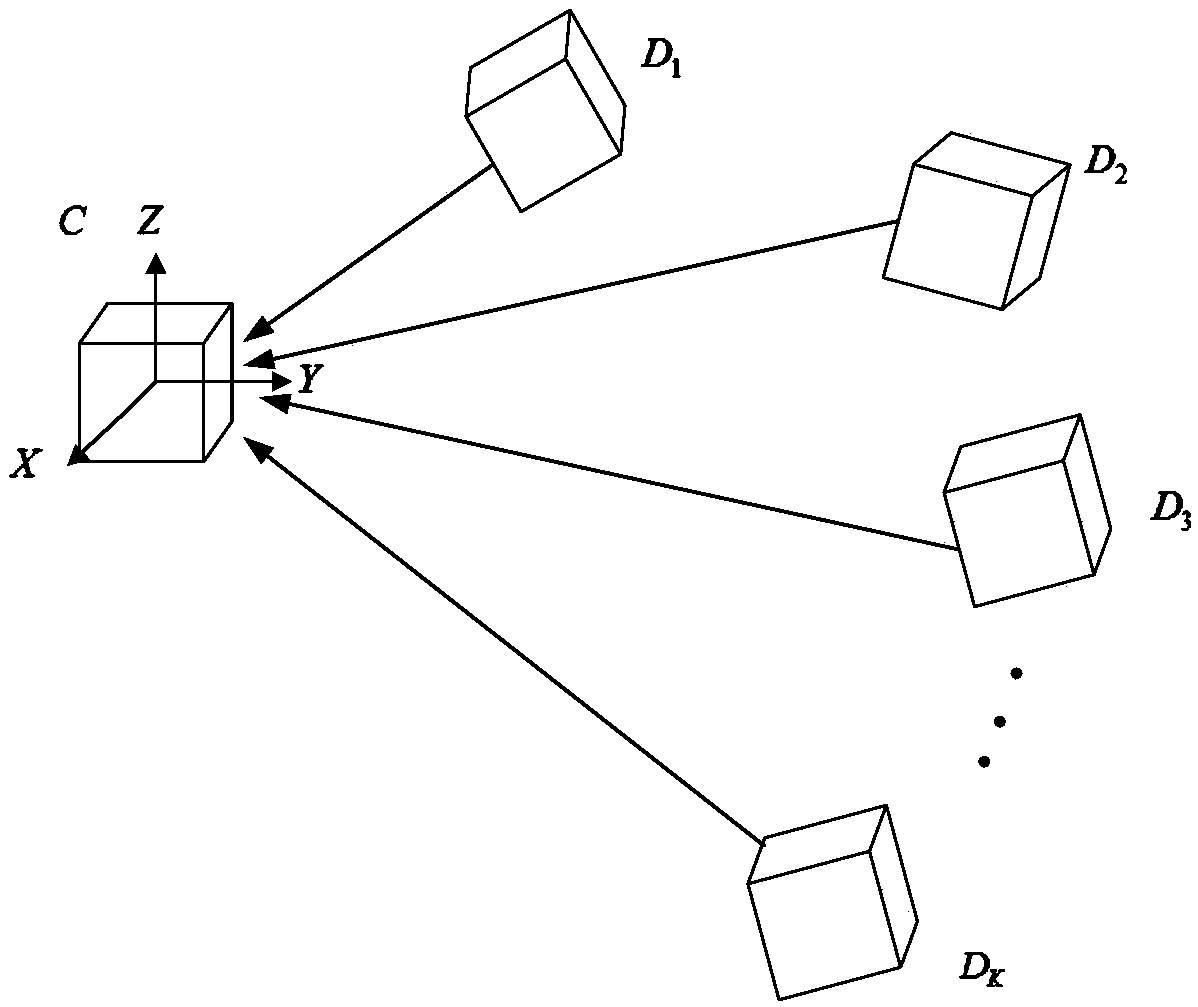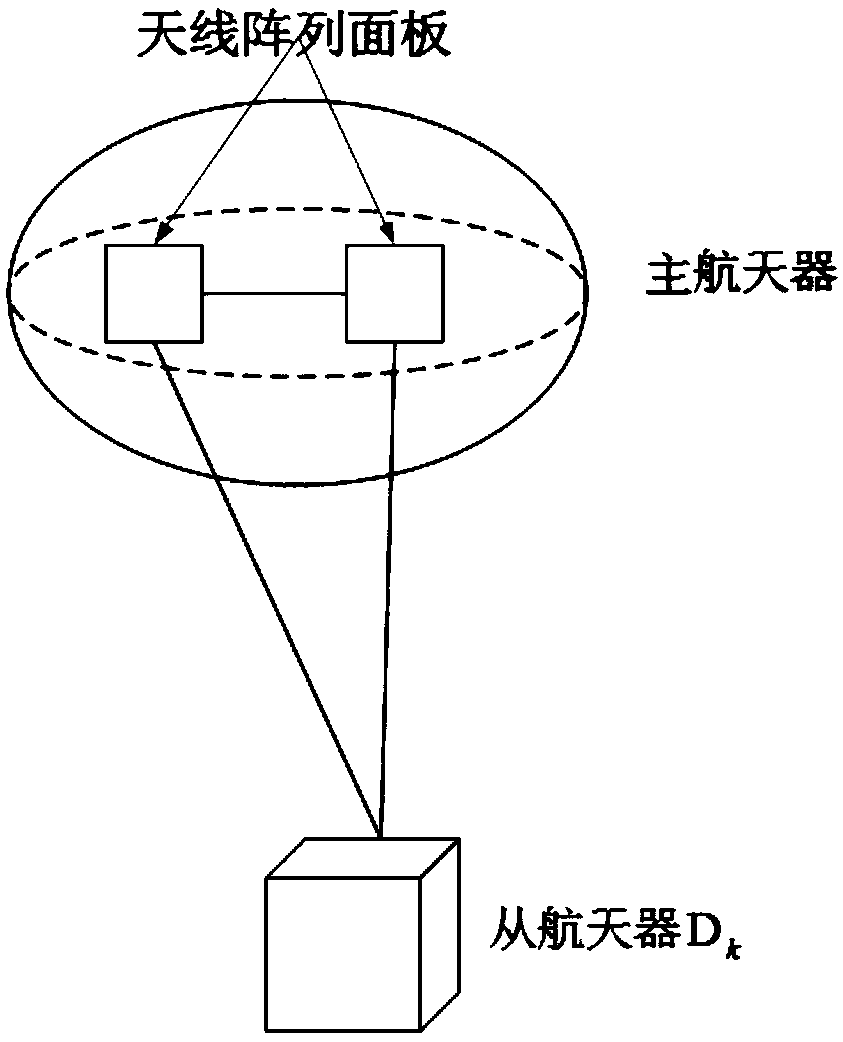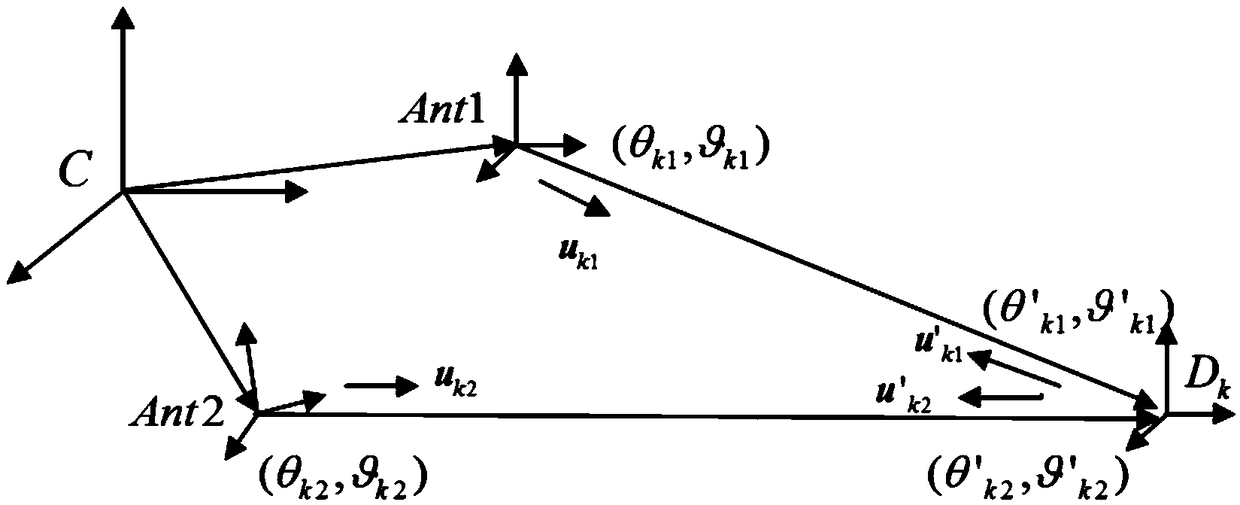Method for determining relative attitude of microsatellite by using dual array antenna
A relative attitude, micro-satellite technology, used in satellite radio beacon positioning systems, radio wave measurement systems, measurement devices and other directions, can solve the problems of increasing the size of the spacecraft, failure, and high lighting requirements.
- Summary
- Abstract
- Description
- Claims
- Application Information
AI Technical Summary
Problems solved by technology
Method used
Image
Examples
Embodiment Construction
[0057] The invention provides a method for determining the relative attitude of micro-satellites by using dual array antennas. Firstly, two array antennas are installed on the master spacecraft, and each slave spacecraft is equipped with receiving array antennas to establish a coordinate system. According to the relative attitude dynamics Equations construct system equations; design each slave spacecraft's array antenna transmit signal and transmit and receive timing; use code division multiple access technology to identify each spacecraft, and make sliding correlation between the output signal and the corresponding detection signal, and obtain each slave at a certain time The LOS path impulse response vector of the spacecraft, respectively determine the angle of arrival and the angle of departure of the two array antennas from the spacecraft to the main spacecraft; use the angle of arrival and the angle of departure to obtain the corresponding unit line-of-sight vector; use the...
PUM
 Login to View More
Login to View More Abstract
Description
Claims
Application Information
 Login to View More
Login to View More - R&D
- Intellectual Property
- Life Sciences
- Materials
- Tech Scout
- Unparalleled Data Quality
- Higher Quality Content
- 60% Fewer Hallucinations
Browse by: Latest US Patents, China's latest patents, Technical Efficacy Thesaurus, Application Domain, Technology Topic, Popular Technical Reports.
© 2025 PatSnap. All rights reserved.Legal|Privacy policy|Modern Slavery Act Transparency Statement|Sitemap|About US| Contact US: help@patsnap.com



